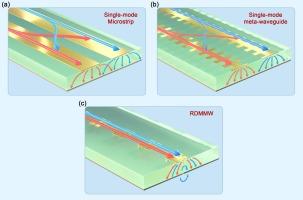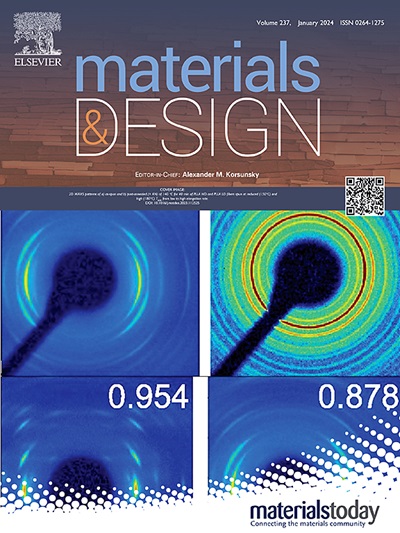Reconfigurable dual-mode meta-waveguide
IF 7.6
2区 材料科学
Q1 MATERIALS SCIENCE, MULTIDISCIPLINARY
引用次数: 0
Abstract
With the rapid growth of information flux, integrating more channels in limited spaces has been a critical requirement for highly-integrated long-range parallel transmissions. Although meta-waveguides, such as spoof surface plasmon polariton (SSPP) waveguides, can suppress crosstalk between adjacent channels, it is still urgent to seek new methods to further increase the number of channels without occupying additional space. Here, we propose a reconfigurable dual-mode meta-waveguide (RDMMW) by integrating diodes into meta-units, which supports two independent channels using two orthogonal modes. The RDMMW can be switched among dual-mode, even-mode, odd-mode and cutoff states by controlling the diodes, which provides more freedom to manipulate the channel features. The RDMMW possess two outstanding merits in highly-integrated long-range parallel transmissions, including lower coupling between two channels than conventional single-mode waveguides and constant mode coupling in longer waveguides. Thus the proposed RDMMW has advantages of multi-mode, reconfiguration, low coupling and high integration density, providing a new avenue to realize highly-integrated multi-functional systems.

可重构双模元波导
随着信息流量的快速增长,在有限空间内集成更多信道已成为高度集成远距离并行传输的关键要求。尽管元波导(如欺骗性表面等离子体极化子(SSPP)波导)可以抑制相邻信道之间的串扰,但在不占用额外空间的情况下进一步增加信道数量仍然迫切需要寻求新的方法。在此,我们提出了一种可重新配置的双模元波导(RDMMW),它将二极管集成到元单元中,利用两种正交模式支持两个独立的信道。通过控制二极管,RDMMW 可以在双模、偶模、奇模和截止状态之间切换,从而为操纵信道特性提供了更大的自由度。与传统单模波导相比,RDMMW 在高度集成的长距离并行传输中具有两个突出优点,包括双通道之间的耦合更低,以及在较长的波导中具有恒定的模式耦合。因此,所提出的 RDMMW 具有多模、可重构、低耦合和高集成度等优点,为实现高度集成的多功能系统提供了一条新途径。
本文章由计算机程序翻译,如有差异,请以英文原文为准。
求助全文
约1分钟内获得全文
求助全文
来源期刊

Materials & Design
Engineering-Mechanical Engineering
CiteScore
14.30
自引率
7.10%
发文量
1028
审稿时长
85 days
期刊介绍:
Materials and Design is a multi-disciplinary journal that publishes original research reports, review articles, and express communications. The journal focuses on studying the structure and properties of inorganic and organic materials, advancements in synthesis, processing, characterization, and testing, the design of materials and engineering systems, and their applications in technology. It aims to bring together various aspects of materials science, engineering, physics, and chemistry.
The journal explores themes ranging from materials to design and aims to reveal the connections between natural and artificial materials, as well as experiment and modeling. Manuscripts submitted to Materials and Design should contain elements of discovery and surprise, as they often contribute new insights into the architecture and function of matter.
 求助内容:
求助内容: 应助结果提醒方式:
应助结果提醒方式:


